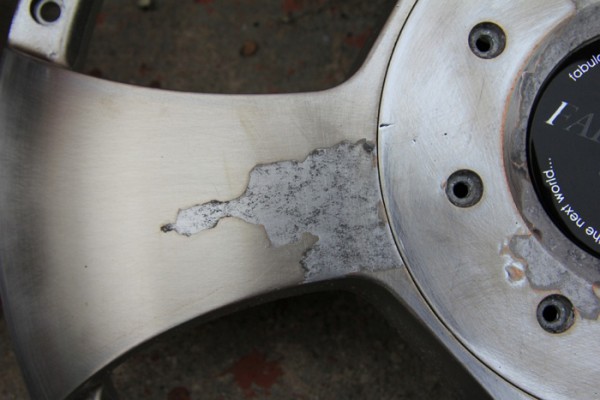Aluminum and its alloys are characterized by excellent resistance to destruction of various nature. However, despite this - aluminum corrosion is not such a rare occurrence. Various forms of corrosion are the main cause of damage to these materials. To deal with destructive processes, it is necessary to understand the factors that are the cause of their appearance.
Corrosion of aluminum is a reaction that takes place between a metal and its environment. This process can be of both natural and chemical origin. The most common form of metal destruction can be called the appearance of rusting processes on its surface.
A feature of all types of metals can be called their property to react with water and the environment. The difference for each type of metal is considered only the intensity of this process. For example, in noble metals such as gold, the speed of such a reaction will not be too fast, but iron, including aluminum, will respond to influences of this nature rather quickly.
Two factors can be distinguished that have a direct effect on the intensity of the corrosion process. One of them can be called the degree of environmental aggressiveness, and the second metallurgical or chemical structure. The atmosphere that surrounds us is always characterized by a certain level of humidity. In addition, it is characterized by a certain level of pollution and waste.
Given that the properties of the atmosphere are often determined by the region and the degree of industrialization, today we can distinguish:
- rural areas (low pollution and average humidity);
- coastal areas (medium pollution and high humidity);
- urban area (average level of humidity and average level of decay products of liquid fuel, sulfur and carbon oxides);
- industrial and industrial zones (a large amount of sulfur, carbon oxides and acids, as well as an average level of humidity)
In most cases, inorganic acids, even at low concentrations, can dissolve aluminum. And even a natural film of aluminum oxide cannot be sufficient protection against the occurrence of corrosion processes.
The most powerful solvents are fluorine, potassium and sodium. In addition, aluminum is characterized by a rather low resistance to chlorine and bromine compounds. Very aggressive to various alloys of aluminum metals, are lime and cement mortars.
There are several types of corrosion manifestations of aluminum and its alloys:
- Superficial. This type of destruction is most common and is the least harmful. It is easiest to spot on the surface. This makes it possible to use safety equipment in a timely manner. Surface damage is very common on anodized profiles for construction.
- LocalSuch destruction is manifested in the form of shapes, recesses and spots. This type of corrosion is surface and intercrystalline type. Destruction of this nature is especially dangerous, due to the fact that they are quite difficult to detect. Such corrosion very often destroys precisely inaccessible parts of structures and assemblies.
- Filiform or filigree. This type of destruction of aluminum often appears under organic coatings, as well as on the boundary surfaces of the treatment. Thread-like corrosion appears in weakened areas of damage to the organic coating or the edges of the holes;
Quite often, the natural anti-corrosion capabilities of aluminum and its alloys to protect against damage is not enough. A long period of operation of products from these metals, without fail, will require the use of additional protection methods. The most common methods for the protection of metals from corrosion include:
- anodizing oxidation (studies by German experts show that this type of protection is used for 15% of the total production of building profiles in the world);
- coating the surface of metals with powder compositions;
- protection against contact with other metals
Anodizing
Anodized coating is a coating that creates on the surface of aluminum a durable film of aluminum oxide, which is not susceptible to aggressive environments. This treatment allows you to create a film layer on the metal surface that simply does not leave aluminum in contact with the external environment and protects it from oxidation processes.

Protection against contact with other metals
In contact with other metals, aluminum and its alloys may constitute a galvanic pair. Such contact often causes corrosion. In order to avoid the occurrence of such processes, it is necessary to use fasteners on products from this metal, which are made only of stainless and galvanized steel.
Polymer coatings
One of the most effective methods of anticorrosive protection of structures made of aluminum and its alloys is the coating of surfaces using various paints and polymer compositions. The constant growth in demand for products and metal and the huge color products from this material is the reason that the technique and methods of applying such coatings are constantly improving and becoming more advanced from the technological side.
Modern materials, with which a protective coating is applied to aluminum, consist of solvents, dyes and binders. Paints in which there is no solvent are called powder paints, and those in which there is, nevertheless, a solvent, are called wet paints.
The staining methods that modern manufacturers use can be divided into:
- wet-surface coating is performed using a two-component hardener paints, which in technical information to the material is often called DD and PUR-Lack paint.
- powder type coatings, applied by conventional spraying on a single layer or dry.
It can be noted that aluminum itself has excellent corrosion resistance properties. But in contact with electricity or other metals, it is still exposed to various destructive processes.
The best ways to protect this metal and its alloys are considered to be anodizing and powder coating.








